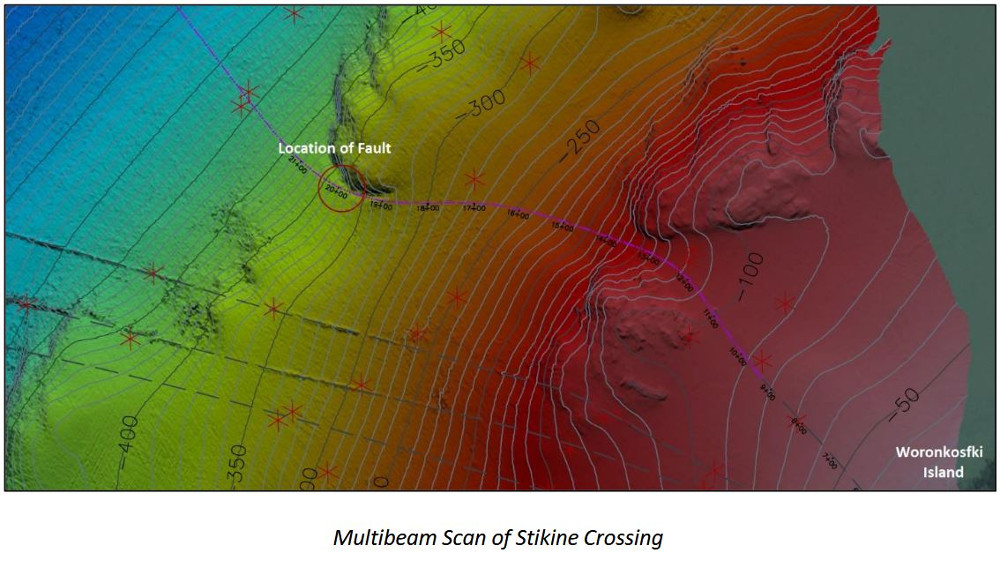
Local representatives are sounding the alarm about Petersburg’s connection to its main source of electricity. The Southeast Alaska Power Agency, or SEAPA, Petersburg’s wholesale power provider, is investigating why an underwater transmission line failed in late September and whether it can be fixed.
Petersburg lost power on the afternoon of September 29th and the culprit has been identified – a powerline that connects the community to SEAPA’s Tyee Lake hydroelectric plant. SEAPA officials say a fault occurred on a submarine cable about two thousand feet off the shoreline of Woronkofski Island between Wrangell and Petersburg. The problem spot is about 300 to 400 feet under water. The cables were installed in 1982 on the ocean floor across the Stikine Strait.
Bob Lynn is a Petersburg borough assembly member and is the community’s voting member on the or SEAPA board of directors. He told the assembly Monday that the community is now being supplied on a backup cable.
“Now that spare cable is in use and this cable is out and we cannot, if one of those cables went out everything’s out of synch and Petersburg will not have power, if one of those other cables goes down,” Lynn said. “So it’s a pretty critical problem that they’re working on right now.”
That spare cable in use now is actually three separate ones, transmitting that electricity in three phases. And the one that failed did so around what looks like an underwater cliff. That problem cable for some reason has also moved away from others installed in the same place. The power agency in 2018 contracted for inspections of all its submarine cables by Remote Operated Vehicle. That work last year and the review of the problem this year show potential problems with the backup line that’s Petersburg’s last connection to Tyee power.
“Once we looked at this fault, we also looked at the other three cables,” said Robert Larson, Petersburg’s alternate on the SEAPA board. “It turns out that two of those three cables are suspended in water, they’re suspended 30 feet up in the water column, for over a thousand feet. They were never designed for that. So we need to have this fixed because we don’t know what the future’s going to bring for those other three cables. If one of those goes down then we’re looking at running diesels for a year.”
The price of electricity skyrockets if that happens. The SEAPA board members say the agency has borrowed an ROV from the University of Alaska to investigate and hired a geologist to look at whether the ocean floor has shifted since the cable was installed. SEAPA also may hire a cable consultant to look at the next steps.
“We’ve got emphasis on this to get this fixed and the other communities agree, there’s no question,” Lynn said. “But we just have to do it systematically and look at the data and see what we come up with.”
Lynn said the board heard that mobilization costs alone for the equipment to install new cable could cost one million dollars, while the fix itself could cost millions of dollars as well. That might mean SEAPA looks at replacing other submarine cables in Southeast Alaska at the same time.











